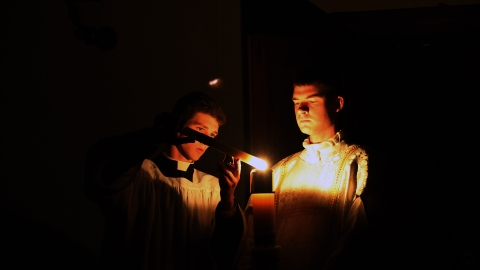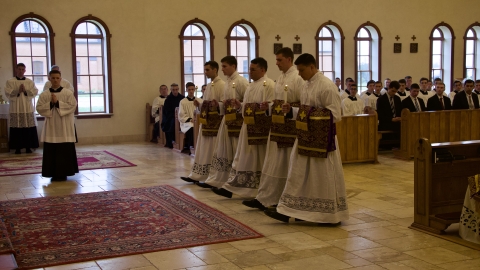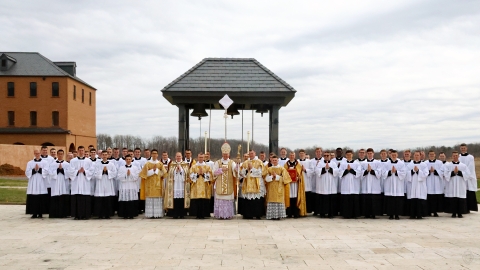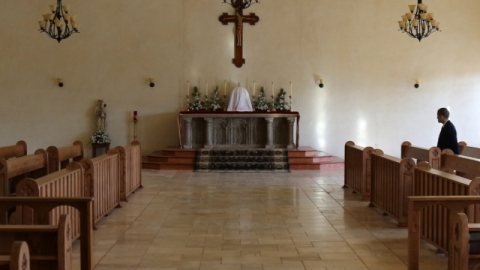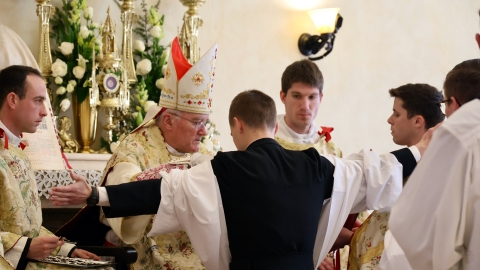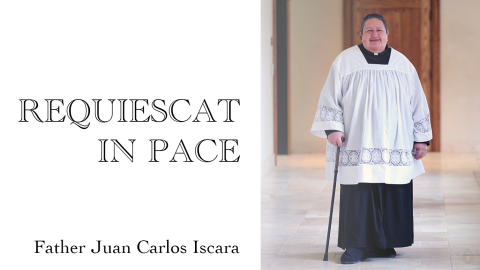Candlemas 2021: 12 Seminarians Receive the Clerical Tonsure
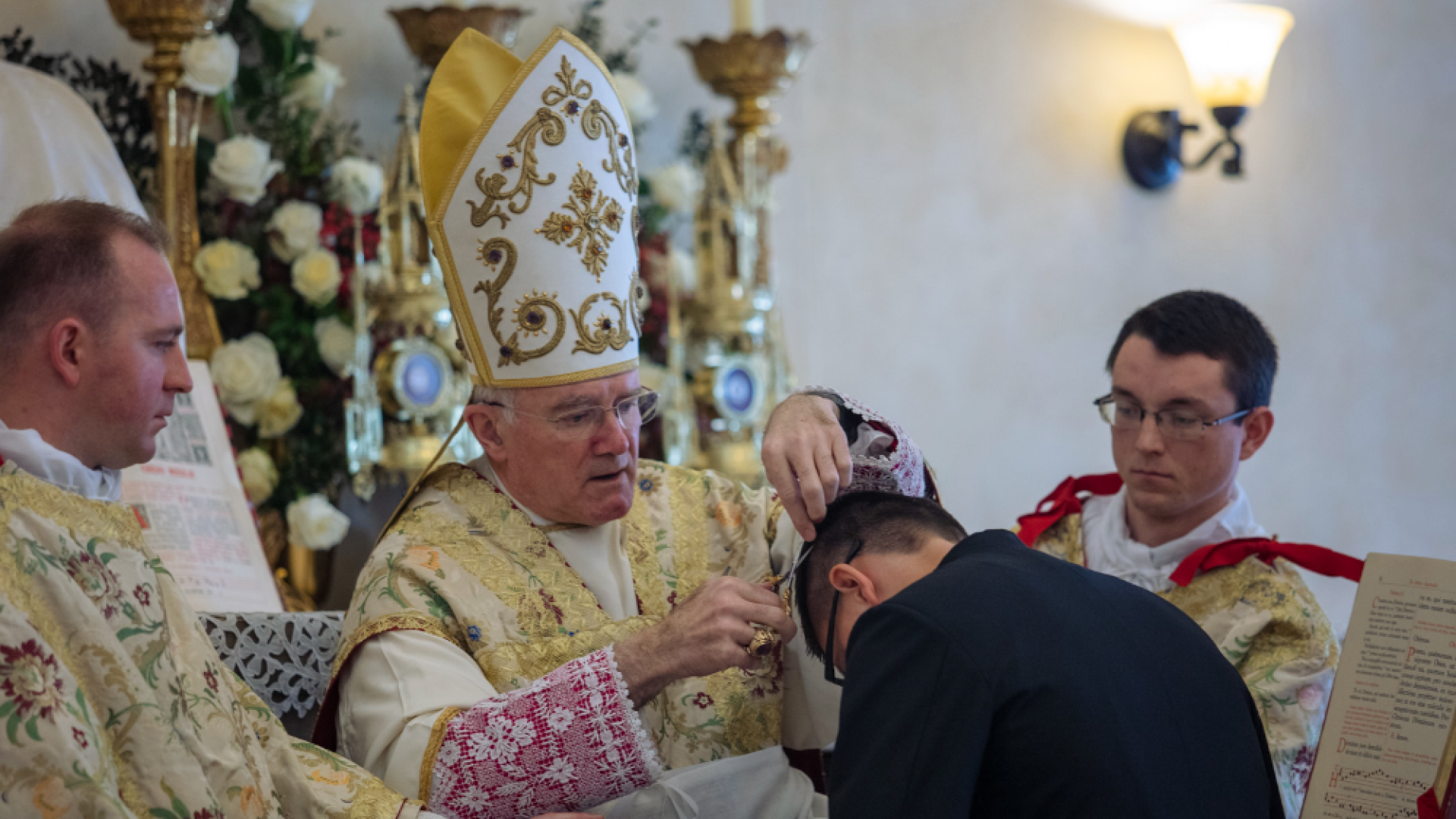
On the morning of February 2nd, H.E Bishop Bernard Fellay conferred the clerical tonsure upon 12 seminarians who offered themselves for the service and glory of the Church.
In receiving the tonsure and reciting with the Bishop the words of Psalm 15, the seminarian is raised from the lay state into the rank of the Roman clergy. This ceremony is the first public offering of self that future priests make in union with Our Lord Jesus Christ, who likewise was offered in the temple upon this same day 2000 years ago.
Reception of the Tonsure
The clerical tonsure signifies death to self and death to the world. Five locks of hair are cut from the seminarian’s head in the form of a cross. It is a giving of self and the renouncing of everything superfluous and vain. The Church prays on behalf of the tonsured that the Holy Ghost may “defend their hearts from the entanglements of the world and worldly ambition.” As their hair is being cut, the ordinands say, “The Lord is the portion of my inheritance and my lot; it is Thou who wilt restore to me my inheritance” (Ps. 15:5).
By the tonsure, the young men become clerics, members of the clergy. The word “cleric” comes from the Greek kleros, which means “portion” or “lot.” Those who dedicate themselves to the service of God have God himself as their promised reward, even as He was the special inheritance of the priestly tribe of Levi, who did not receive a portion of the Promised Land. “You shall possess nothing in their land,” the Lord said to Aaron, “neither shall you have any portion among them; I am thy portion and inheritance in the midst of the children of Israel” (Num. 18:20).
Reception of the Surplice
After the tonsure the new clerics receive the surplice. White in color, it signifies “the new man, who is created according to God in justice and holiness of truth.” The surplice is put on over the cassock as the positive aspect of the Christian life, which follows upon the negative aspect, death to self. “If any man will come after me, let him deny himself, and take up his cross, and follow me” (Mt. 16:24). What happens if we follow Christ? “He that followeth me, walketh not in darkness, but shall have the light of life” (Jn. 8:12). Christ is the light of the world; as Simeon said, “A light to the revelation of the Gentiles, and the glory of thy people Israel” (Lk. 2:32).
The prophet Malachias had foretold that the Lord would come to his Temple “as a refining fire” and would “purify the sons of Levi” so that they would “offer sacrifices to the Lord in justice” (Mal. 3:1-3). Christ is a fire that purifies the heart, enlightening it with faith and inflaming it with the warmth of charity. The Church prays for the tonsured, that Christ may send the Holy Ghost to “open their eyes from all spiritual and human blindness and bestow on them the light of eternal grace.”
Petition
We may conclude, then, with the petition that Holy Mother Church makes at Candlemas: “Lord Jesus Christ, the true Light who enlighten every man coming into this world…mercifully grant that, even as these lights, enkindled with visible fire, dispel the darkness of the night; so may our hearts, enlightened by an invisible fire—the splendor of the Holy Ghost—be free from all blindness of vice, so that, with our mind’s eye cleansed, we may be able to perceive what pleases thee and conduces to our salvation; so that, after the murky perils of this world, we may deserve to attain to the unfailing light.”
































